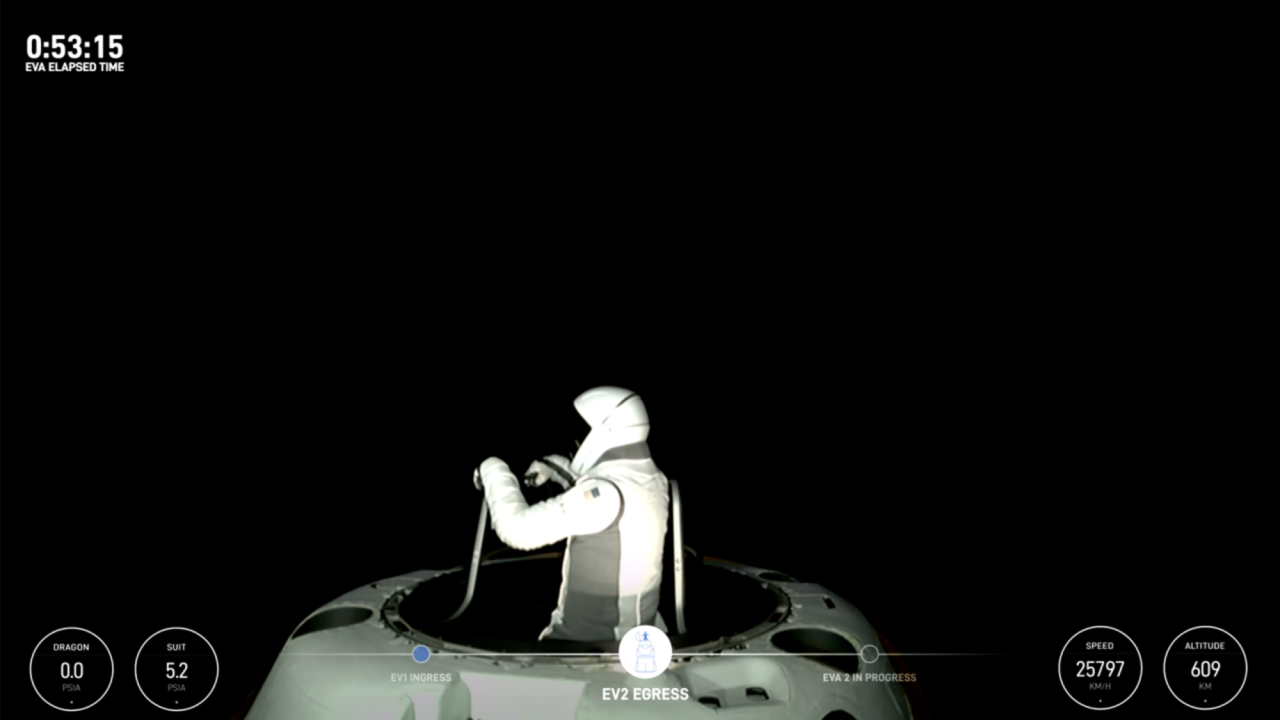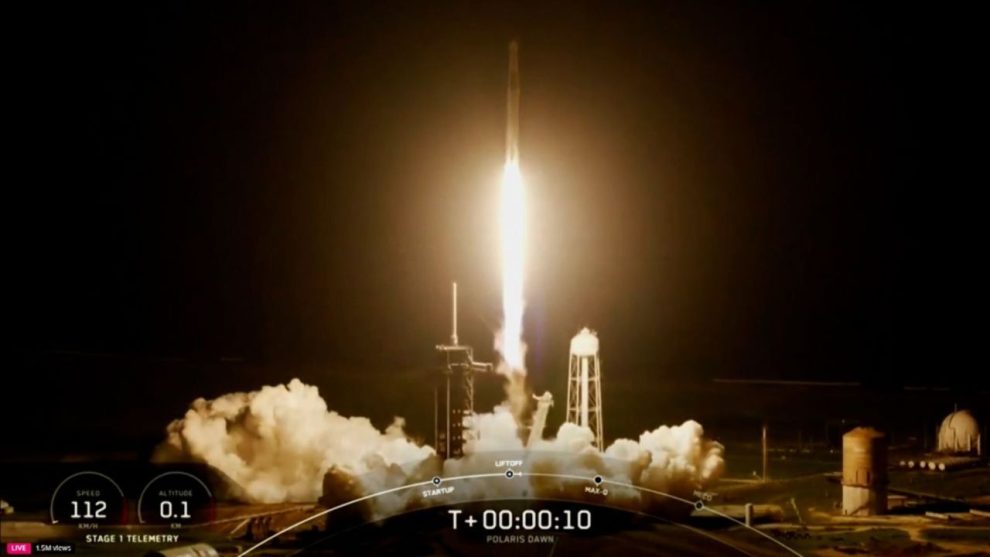() – SpaceX’s Polaris Dawn crew is entering its fifth day in orbit, marking several milestones on a historic journey, including the world’s first commercial spacewalk.
Performing a spacewalk is nothing new.
NASA has been carrying out these operations in outer space since 1965, when the Gemini program introduced this capability to the United States.
Since then, astronauts around the world have used spacewalk technology to explore the lunar surface, service the Hubble Space Telescope and help build the International Space Station. Today, spacewalks, also called extravehicular activities or EVAs, are still routinely used on the orbiting laboratory to allow astronauts to check out and maintain its aging exterior.
This was the historic takeoff of Space X’s Polaris Dawn: the first mission with commercial spacewalks
But SpaceX proved Thursday that spacewalking is a task that can be undertaken by the industrial sector, not just government astronauts. In doing so, Elon Musk’s company took a big step toward commercializing those capabilities.
It was the first time a private mission into space had attempted such a thing. And although the crew members did not venture far outside the vehicle, they pushed the limits and took considerable risks.
During the high-risk event, the Crew Dragon capsule was fully depressurized before the entire crew — including Shift4 Payments CEO Jared Isaacman, former U.S. Air Force pilot Scott “Kidd” Poteet and SpaceX engineers Anna Menon and Sarah Gillis — were exposed to the vacuum of space.
Isaacman and Gillis then exited the vehicle for about 10 minutes each, performing a series of tests to understand the functionality of their EVA suits, before returning to the interior of the spacecraft and closing the circular hatch.
The dangers and risks of spacewalking were enormous.
A misstep during a crucial “pre-breathing” process in the run-up to the spacewalk could have put the crew at risk of decompression sickness, a condition experienced by divers that involves the formation of nitrogen bubbles in the blood.

Facing the abyss: this was the historic first commercial spacewalk of SpaceX’s Polaris Dawn mission
This crew also put the EVA suits, designed and developed by SpaceX in just two and a half years, to the test. The suits had to protect them from the extreme temperatures of outer space, as well as maintain pressure and supply oxygen to the four crew members.
The spacewalk, however, went off without a hitch. Isaacman reported after taking his first look at the outside of the spacecraft:
“Back home we all have a lot of work to do, but from here it seems like a perfect world.”
NASA Administrator Bill Nelson also offered his congratulations after the spacewalk in a post on X, formerly known as Twitter.
“Congratulations @PolarisProgram and @SpaceX on the first commercial spacewalk in history!” Nelson wrote. “Today’s success represents a giant leap forward for the commercial space industry and @NASA’s long-term goal of building a vibrant American space economy.”
The four citizen astronauts will have much to celebrate upon their return. Even before the spacewalk, the mission had already distinguished itself from other privately funded and operated trips to orbit, which tend to stick to less risky mission profiles or include brief visits to the International Space Station guided by professional astronauts.
The crew also became the first group of people to venture into the lower reaches of the Van Allen radiation belts in five decades.
The Van Allen belts trap concentrations of high-energy particles from the Sun that interact with Earth’s atmosphere, creating two dangerous bands of radiation, according to NASA.
After the crew launched into orbit aboard a Falcon 9 rocket at 5:23 a.m. ET Tuesday, SpaceX’s Crew Dragon capsule immediately began elevating its attitude, using its onboard engines to place itself into an oval-shaped orbit extending up to 900 miles (1,400 kilometers) above Earth.
This altitude is located in the inner band of the Van Allen radiation belts, which begin about 1,000 kilometers from Earth.
The crew’s apogee – or furthest point from Earth – made Gillis and Menon the first women to travel so far from our planet.
The apogee also marked the greatest distance traveled by a human since NASA’s Apollo program ended in 1972, and was the highest orbit ever achieved around the Earth, surpassing the record set in 1966 by NASA’s Gemini 11 mission, which reached 853 miles (1,373 kilometers).
After completing about six orbits around the planet by that time with the crew safely inside, the Crew Dragon capsule fired its engines again to lower its orbital trajectory. Thursday’s spacewalk took place when the vehicle was orbiting at a height of between 185 and 732 kilometers above Earth.
The most dangerous part of the journey may be over, but the Polaris Dawn crew still has a key milestone ahead of them: getting home.
The team is scheduled to return to Earth this weekend aboard the Crew Dragon capsule off the coast of Florida.
Mission commander Isaacman, who also led and partially funded this mission to orbit, previously told that the Polaris Dawn crew would only have about five or six days of life support on the vehicle.
This would mean that the return to Earth could occur in the early hours of Sunday to Monday.
Splashdown can occur at any of seven possible locations on the east and west coasts of Florida, as with all Crew Dragon missions returning to Earth.



![[Img #74675]](https://thelatestnews.world/wp-content/uploads/2024/12/They-discover-a-new-class-of-X-ray-sources-in-the-150x150.jpg)









![[Img #74675]](https://thelatestnews.world/wp-content/uploads/2024/12/They-discover-a-new-class-of-X-ray-sources-in-the-300x200.jpg)


Add Comment